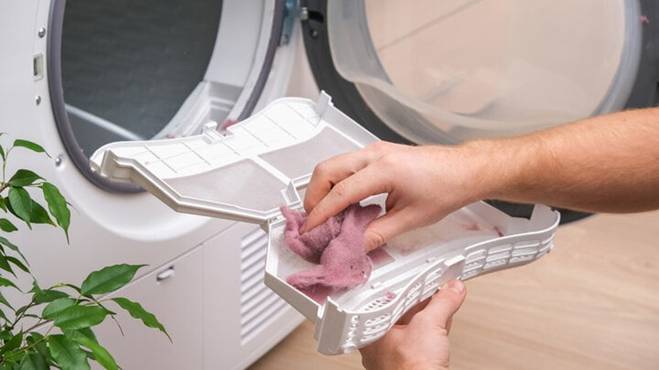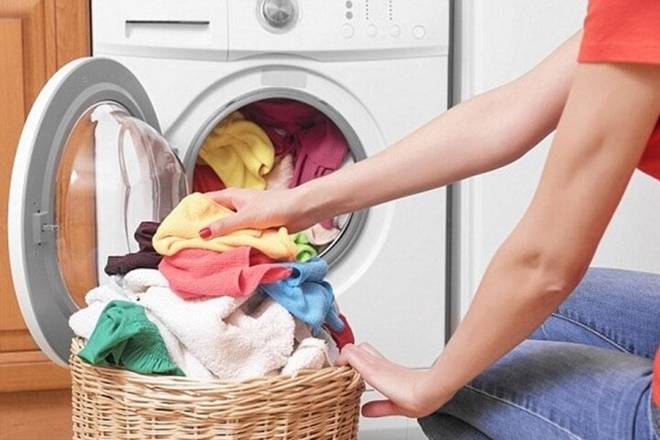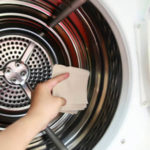Clothes dryers save time and effort in doing laundry, especially on rainy or humid days. They not only dry clothes quickly and conveniently but also protect the fabric from damage and kill bacteria to safeguard the wearer, especially children. This appliance also helps save space for hanging clothes.
What to Avoid When Using a Clothes Dryer
Despite its convenience, improper use of a dryer can damage clothes, reduce the machine’s efficiency, or even lead to dangerous accidents. Here are some things to avoid when using a clothes dryer to protect your garments and prolong the appliance’s lifespan.

There are several things to avoid when using a clothes dryer. (Image: Haier NZ)
Using the Dryer for All Fabric Types
Not all fabrics are suitable for machine drying. Some heat-sensitive materials may shrink, deform, or get damaged. Fabrics like wool, silk, thin nylon, or clothes with plastic or metal attachments should be avoided in the dryer. Always check the clothing labels before drying and choose the appropriate setting or opt for air-drying if necessary.
Neglecting to Clean the Lint Filter Regularly

Laziness in cleaning the lint filter reduces drying efficiency and increases fire hazards. (Image: The Spruce)
The lint filter in a dryer traps small fabric fibers, pet hair, and debris that can come off clothing during the drying process. Neglecting to clean this filter regularly not only reduces drying efficiency but also increases the risk of fires due to the accumulation of flammable lint. Remember to clean the lint filter after each use to ensure optimal and safe dryer performance.
Continuously Drying Clothes at High Temperatures
Drying clothes at continuously high temperatures can damage the fabric and shorten their lifespan. High heat can cause clothes to shrink, fade, or deform. If your laundry load isn’t too heavy, opt for low or medium heat settings. Using lower temperatures also saves energy and is environmentally friendly.
Overloading the Dryer

Overloading the dryer with too many items is something to avoid. (Image: Simply Recipes)
One common mistake is overloading the dryer. Stuffing too many clothes into the machine reduces drying efficiency and can damage it. Clothes need space to tumble and dry evenly. Overloading leads to wrinkled, damp clothes and forces the dryer to work harder, accelerating wear and tear.
Always adhere to the maximum capacity recommended by the manufacturer to protect your dryer.
Failing to Check Pocket Items
A crucial thing to avoid is neglecting to check pockets before drying. Small items like keys, pens, papers, or electronics can be accidentally left in pockets, damaging both clothes and the dryer. Metal objects, in particular, can cause noise and scratch the drum. Thoroughly check pockets to prevent any mishaps.
Over-drying Clothes
Over-drying not only damages the fabric but also wastes energy. Over-dried clothes can become stiff and uncomfortable to wear. To prevent this, choose the appropriate drying setting for each fabric type and set a suitable timer. A tip is to add a damp towel to the dryer if you feel the clothes are getting too dry.
Not Using Dryer Balls or Fabric Softener
Dryer balls or fabric softener help clothes dry faster and reduce wrinkling. Without these tools, clothes are more likely to twist together, reducing drying efficiency. Dryer balls also reduce static electricity, a common issue with synthetic fabrics. Consider using these simple tools to optimize the drying process.
Putting Wet Clothes Directly into the Dryer
Avoid putting clothes into the dryer right after washing without spinning or air-drying first. Excessively wet clothes lengthen drying time and consume more energy. If your washing machine has a spin cycle, use it before transferring clothes to the dryer. This will speed up drying and save on electricity costs.
Neglecting Regular Dryer Maintenance

Dryers require periodic inspection and maintenance for optimal performance and longevity. (Image: GreenCric)
Like other electrical appliances, dryers need periodic inspections and maintenance to function properly and last longer. Dust and lint can accumulate in the vent hose, reducing drying efficiency and increasing fire hazards. Clean the vent hose, check moving parts, and ensure no obstructions in the drum for efficient and safe operation.
Ignoring Manufacturer’s Instructions
Each dryer model comes with specific usage instructions from the manufacturer, including fabric recommendations, drying settings, and safety precautions. Failing to follow these guidelines can damage clothes, reduce machine efficiency, and pose safety risks. Always adhere to the manufacturer’s instructions for optimal results and safety.
According to VTC news
“Quick-Drying Clothes: A Guide to Managing Your Wardrobe During the Rainy Season”
With the rainy season approaching, the prolonged damp weather can make it challenging to keep your clothes dry and fresh. The humidity often leads to a musty smell and creates an ideal environment for bacteria to thrive. However, there are clever tricks to combat this issue and ensure your garments dry faster and smell delightful.
“The Ultimate Guide to Washing Machine Hygiene: Ensure Your Clothes Come Out Fresh and Clean Every Time”
Introducing the Ultimate Guide to Transform Your Laundry Experience: Wave Goodbye to Sticky, Unsanitary Clothes with Our Expert Machine Cleaning Tips!
Unleash the power of pristine laundry with our revolutionary guide! Bid farewell to the dreaded stickiness and embrace the freshness you deserve. Our expert insights will elevate your laundry game, ensuring your clothes emerge immaculate and invigorated. Prepare to be amazed as we unravel the secrets to a spotless wash, revolutionizing the way you care for your wardrobe!






































